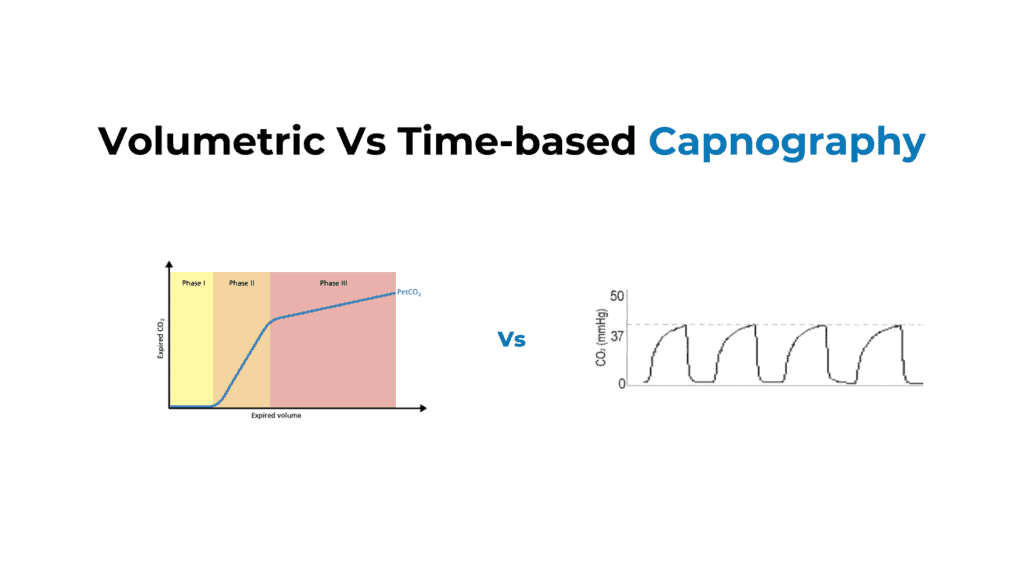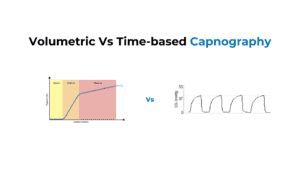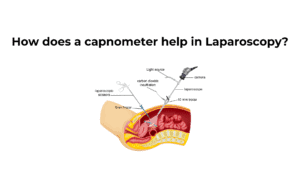Volumetric and time-based capnography are two techniques for measuring carbon dioxide (CO2) levels in exhaled breath, particularly in medical settings. They serve different purposes and provide unique insights into a patient’s respiratory status.
Conventional (time-based) capnography allows only qualitative and semi-quantitative, and sometimes misleading, measurements, so volumetric capnography has emerged as the preferred method to assess the quality and quantity of ventilation.
Volumetric Capnography Vs Time-based Capnography
-
Time-based Capnography

- Time-based capnography measures the concentration of CO2 in exhaled breath over time. It typically displays a waveform known as a capnogram, which represents the partial pressure of CO2 (PetCO2) against time during the respiratory cycle.
- Capnography provides valuable information about ventilation, perfusion, and metabolism. It is used in various medical settings, including operating rooms, intensive care units, emergency departments, and during procedural sedation.
- Time-based capnography helps in assessing the effectiveness of ventilation, detecting airway obstructions, monitoring the adequacy of CPR (cardiopulmonary resuscitation), and diagnosing conditions such as pulmonary embolism and bronchospasm.

- Volumetric capnography, also known as volumetric CO2 monitoring, goes beyond time-based measurements and provides additional information about the volume of exhaled CO2.
- This method measures the volume of CO2 exhaled over time and generates a three-dimensional plot known as a capnogram, where CO2 concentration is plotted against both time and exhaled volume.
- Volumetric capnography gives more detailed insights into lung physiology and gas exchange compared to time-based capnography. It helps in identifying specific patterns of ventilation and perfusion abnormalities, differentiates between various respiratory conditions, and guides therapy in critically ill patients.
- This method is particularly useful in assessing lung function during mechanical ventilation, evaluating the effects of positive end-expiratory pressure (PEEP), and optimizing ventilator settings in patients with acute respiratory distress syndrome (ARDS) or chronic obstructive pulmonary disease (COPD).
[Click here] to learn more about “The World’s First Smart Capnometer”









